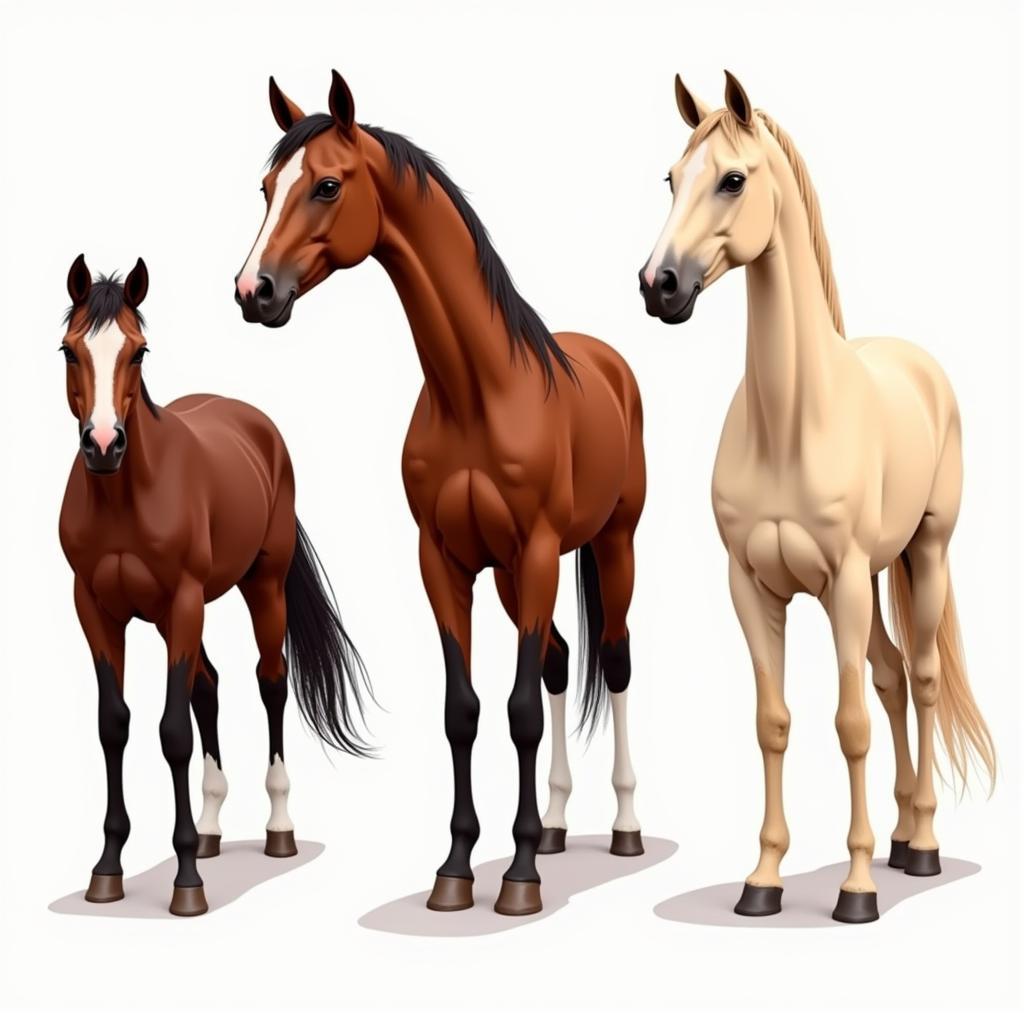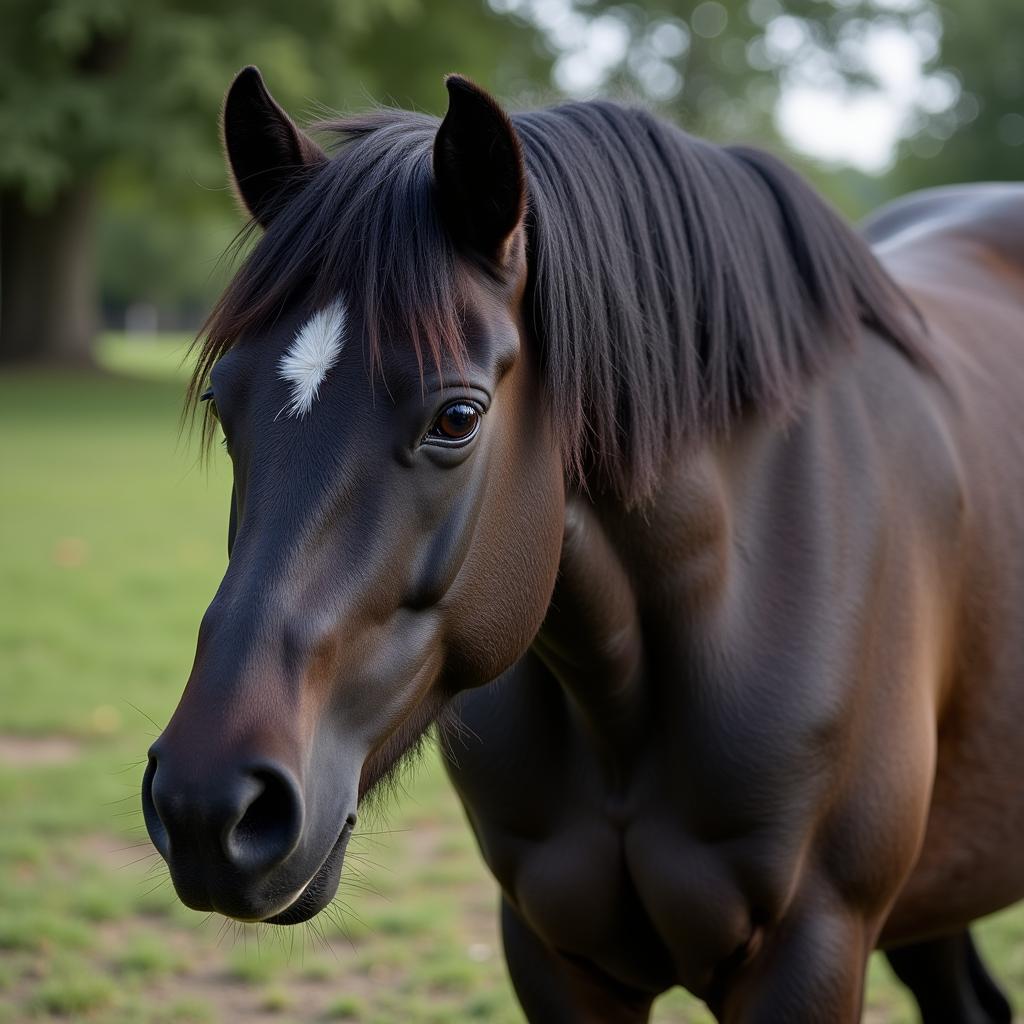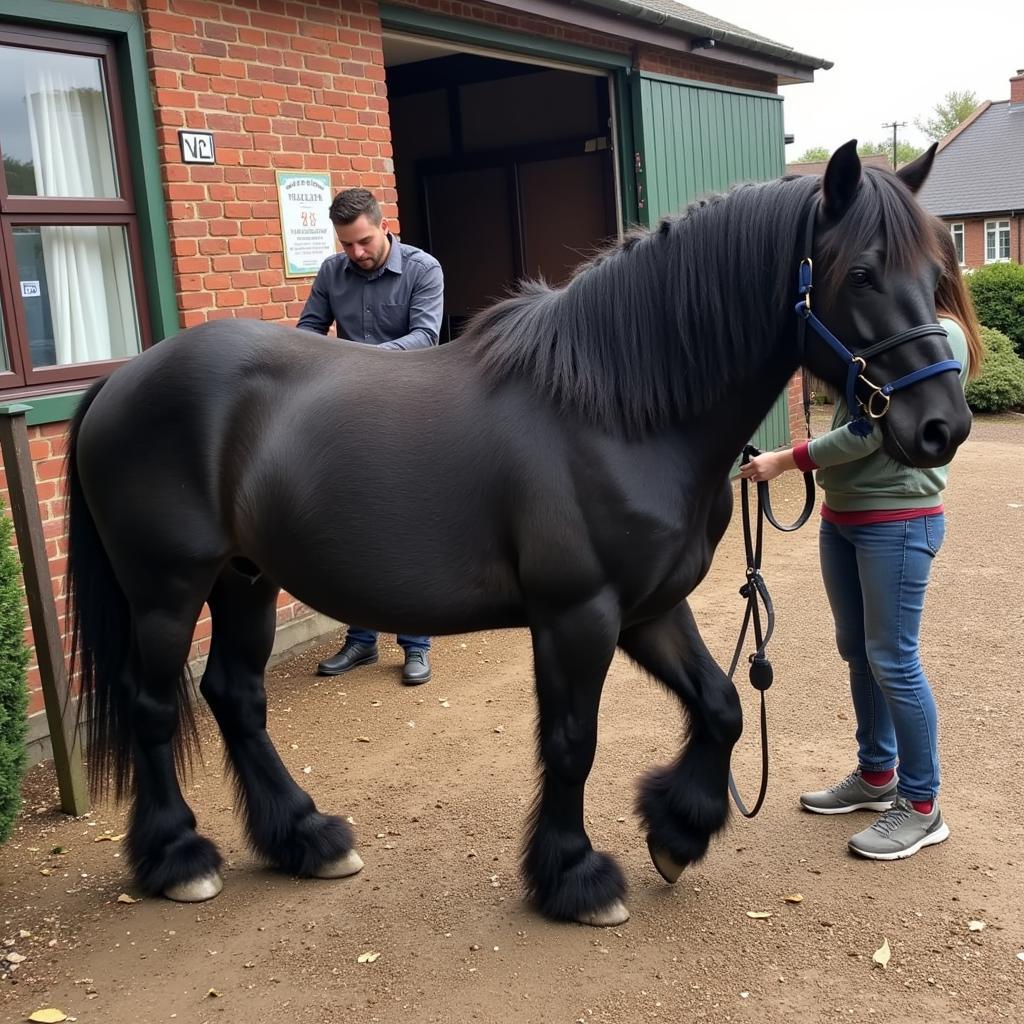The Sooty Horse, a captivating equine enigma, often sparks curiosity with its unique coat coloration. This in-depth exploration delves into the genetic factors, visual characteristics, and care considerations surrounding these remarkable animals. What exactly makes a horse “sooty”? Let’s unravel the secrets behind this fascinating trait.
Decoding the Genetics of a Sooty Horse
The sooty appearance in horses is caused by the presence of the sooty gene, a modifier gene that acts upon the base coat color. This gene doesn’t create a color itself but rather overlays a dark pigment, giving the horse a “smudged” or darkened look. It’s important to distinguish a sooty horse from a smoky black horse, which has a distinct genetic basis for its dark coat. Sooty can affect a wide range of base colors, from chestnut and bay to even palomino, resulting in a diverse spectrum of sooty variations.
 Sooty Horse Genetics Illustration
Sooty Horse Genetics Illustration
Sooty can be subtle, sometimes appearing as a slight darkening of the points, or dramatic, creating an almost black appearance over the entire body. The intensity of the sooty effect can vary significantly, even within the same breed. This variation makes identifying the sooty gene a challenging but intriguing aspect of equine genetics.
Identifying the Sooty Horse: Key Characteristics
Recognizing a sooty horse involves careful observation of its coat. While the intensity varies, some common characteristics can help with identification. Look for darkening around the muzzle, ears, legs, and topline. The coat may appear to have black hairs interspersed throughout, giving it a dusty or smoky appearance. Differentiating a sooty horse from a chocolate horse color can be tricky, as both can exhibit dark brown shades. However, the sooty horse will often have a more uneven distribution of the dark pigment.
 Identifying Sooty Horse Characteristics
Identifying Sooty Horse Characteristics
“The key to identifying a sooty horse lies in understanding the subtle nuances of its coat,” says Dr. Amelia Hartman, renowned equine geneticist. “It’s not just about the overall darkness, but the specific areas affected and the distribution of pigment.”
Is Sooty Desirable?
The desirability of the sooty trait is subjective and depends largely on personal preference and breed standards. In some breeds, a subtle sooty overlay can be seen as enhancing the richness of the coat color. In others, a heavily sooty appearance may be considered undesirable. Understanding breed standards is crucial when evaluating the impact of the sooty gene.
Caring for a Sooty Horse
Caring for a sooty horse is essentially the same as caring for any other horse. Their unique coat color doesn’t require any special grooming or dietary considerations. Regular grooming practices, including brushing, bathing, and hoof care, are essential for maintaining a healthy coat and overall well-being. A balanced diet, adequate exercise, and regular veterinary checkups are fundamental to the health of any horse, regardless of its coat color.
Common Misconceptions About Sooty Horses
One common misconception is that sooty horses are always black or very dark. As discussed, sooty can manifest subtly on various base coat colors. Another misconception is that the sooty trait is linked to certain health issues. There is no scientific evidence supporting this claim. The sooty gene purely affects coat color and has no known connection to any health problems.
“Sooty horses are just as healthy and capable as horses of any other color,” explains renowned equine veterinarian, Dr. James Riley. “Their unique coloration is simply a fascinating genetic variation.”
 Sooty Horse Care Routine
Sooty Horse Care Routine
Conclusion: Appreciating the Sooty Horse
The sooty horse, with its intriguing coat coloration, represents the remarkable diversity within the equine world. Understanding the genetics and characteristics of this trait allows us to fully appreciate the unique beauty of these animals. While the sooty gene may add an element of mystery, the care and management of sooty horses remain consistent with standard equine practices. Whether a subtle shading or a dramatic overlay, the sooty horse continues to captivate horse enthusiasts with its enigmatic charm.
FAQs
- What causes a horse to be sooty? The sooty gene modifies the base coat color, adding a dark overlay.
- Is sooty a desirable trait? It depends on personal preference and breed standards.
- Does sooty affect a horse’s health? No, it only affects coat color.
- How can I identify a sooty horse? Look for darkening around the muzzle, ears, legs, and topline.
- Is sooty the same as smoky black? No, they are distinct genetic traits.
- Does caring for a sooty horse require special attention? No, standard horse care practices apply.
- Can a sooty palomino horse exist? Yes, the sooty gene can affect a variety of base coat colors, including palomino.
Do you have other questions about horse colors, such as the silver dapple black horse or perhaps the intriguing black horse gram? Explore our website for more informative articles on various horse-related topics.
Need assistance? Contact us at Phone: 0772127271, Email: [email protected], or visit us at QGM2+WX2, Vị Trung, Vị Thuỷ, Hậu Giang, Việt Nam. Our customer service team is available 24/7.